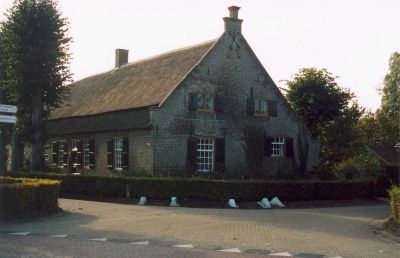Gehucht Boekent | Gemert
Boekent is a street and hamlet south of Gemert. It dates back to the 13th century, as evidenced among other things by the very old tree trunk water well found there.It consists of the intersection of the streets Boekent, Kromstraat, Broekstraat, Oudestraat and the now disappeared Schenkstraat. The name used to be written as Boekhout, meaning Beechwood. It owes its origin to its location at an intersection of ancient roads. First, the old route from Bakel (Oude Bakelseweg) to Gemert (Oudestraat). This road split at Boekent into a road to Handel (former Schenkstraat). Moreover, the old road from Gemert to Helmond (Kromstraat) also connects here and the road from Gemert to De Mortel (Zandstraat). Finally, a road ran from Boekent towards the broek, the swamp forest, (Broekstraat). For many years there has been a hail cross at this crossing.
A …
Boekent is a street and hamlet south of Gemert. It dates back to the 13th century, as evidenced among other things by the very old tree trunk water well found there.It consists of the intersection of the streets Boekent, Kromstraat, Broekstraat, Oudestraat and the now disappeared Schenkstraat. The name used to be written as Boekhout, meaning Beechwood. It owes its origin to its location at an intersection of ancient roads. First, the old route from Bakel (Oude Bakelseweg) to Gemert (Oudestraat). This road split at Boekent into a road to Handel (former Schenkstraat). Moreover, the old road from Gemert to Helmond (Kromstraat) also connects here and the road from Gemert to De Mortel (Zandstraat). Finally, a road ran from Boekent towards the broek, the swamp forest, (Broekstraat). For many years there has been a hail cross at this crossing.
A series of fine farmhouses can be found on Boekent on Kromstraat and the adjacent Broekstraat.The most beautiful one is De Blauwe Kei from 1734; built as a farmhouse cum inn, which gives a relatively large living area.Also located in the hamlet of Boekent are a stool house, a transverse house, a short-gabled farmhouse, a corner-gabled farmhouse and a number of long-gabled farms.The long gable farm is a recent type of farm.Before 1860, no long-gabled farms were built in Gemert.Therefore, this diversity of farm forms also refers to the age of the hamlet.
Virtually all farms had names.Thus on Boekent there were and partly are: Mughof, the short-gabled farm and home weaving Traanpot, the Blauwe Kei Spilkorf, the Roskam, where a cooperative butter factory was established in 1897, and Ter Ynden.Some farmhouses still have their shutters painted in black and white, which are the colors of the Teutonic Order.At the edge of the hamlet of Boekent, in the past there was the Hoeve Ter Ynde. This was named after the ynden, which were fences that served to close off stray cattle. This farm burned down in the 20th century and was never rebuilt. All houses in Kromstraat and Broekstraat have nameplates.

